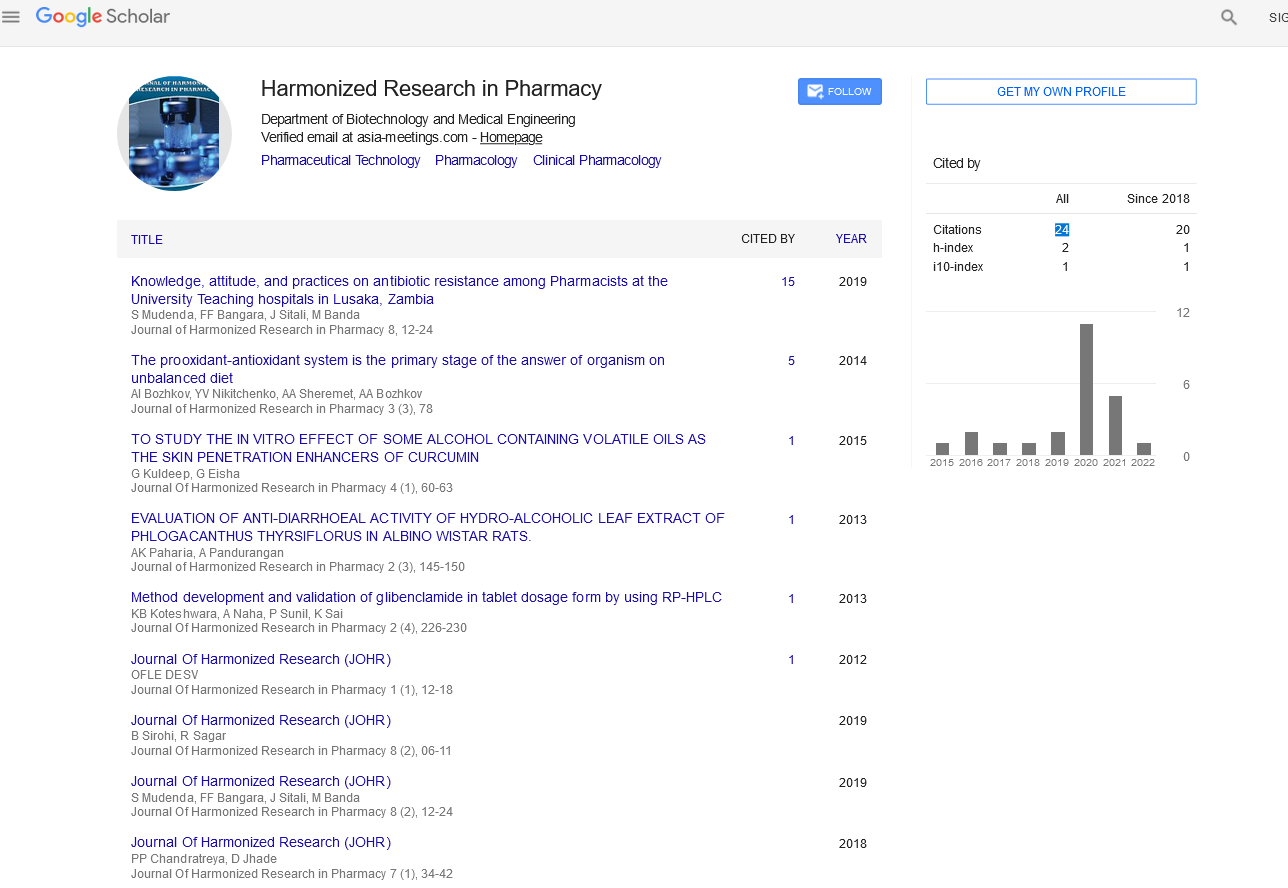DEVELOPMENT AND EVALUATION OF SUSTAINED RELEASE TABLETS FOR HIGHLY WATER SOLUBLE DRUG
Abstract
Author(s): Smita R. Narnaware, Jayshree V. Patil, Shabnam Saher, Archana Bhuyar
Sustained release tablets reduce the frequency of the dosing and increase the effectiveness of the drug by localization at the site of action, providing uniform drug delivery. Verapamil hydrochloride was considered as an ideal drug for designing sustained release formulation because of the high frequency of administration and short biological half-life. Therefore, in the present study, sustained release tablets of verapamil hydrochloride were prepared by using synthetic hydrocolloids like HPMC K4M, K15M, and K100M and using interaction of natural gums like carrrageenan and chitosan. Before using carrrageenan and chitosan an attempt was made to study the mechanism of interaction of carrageenan and chitosan by FT-IR spectroscopy, x-ray diffraction spectroscopy and differential scanning calorimetry. Then these prepared tablets were evaluated for various parameters such as hardness, friability, thickness, weight variation and the formulations were found to be within limits. The in vitro drug release profile of the various formulations was performed. In pH 1.2 buffer Peppas model was found to be the best fit model of drug release and a better control on drug release can be obtained by varying the proportion of HPMC K4M, K15M and K100M. Hence, it was concluded that the drug release can be effectively controlled for a highly water soluble drug verapamil HCI using synthetic hydrocolloids and interaction of natural gums carrageenan and chitosan. Keywords: Sustained release tablet, Verapamil hydrochloride, Hydrocolloids, Carrrageenan, Chitosan

Google Scholar citation report
Citations : 147
Journal of Harmonized Research in Pharmacy received 147 citations as per google scholar report









